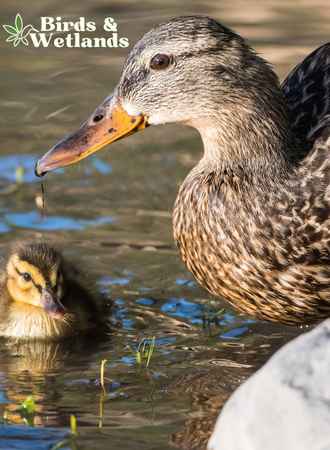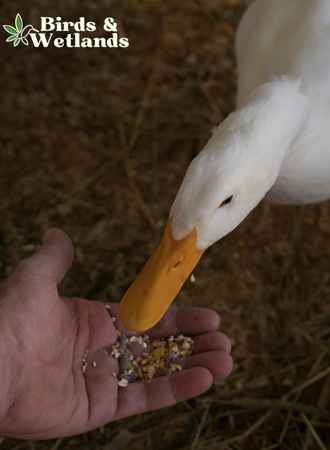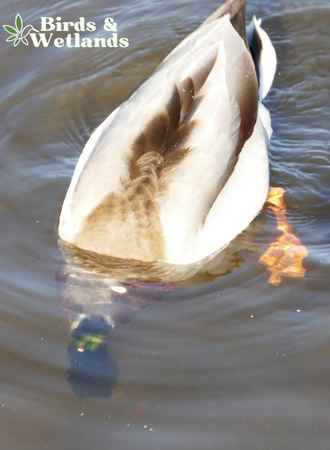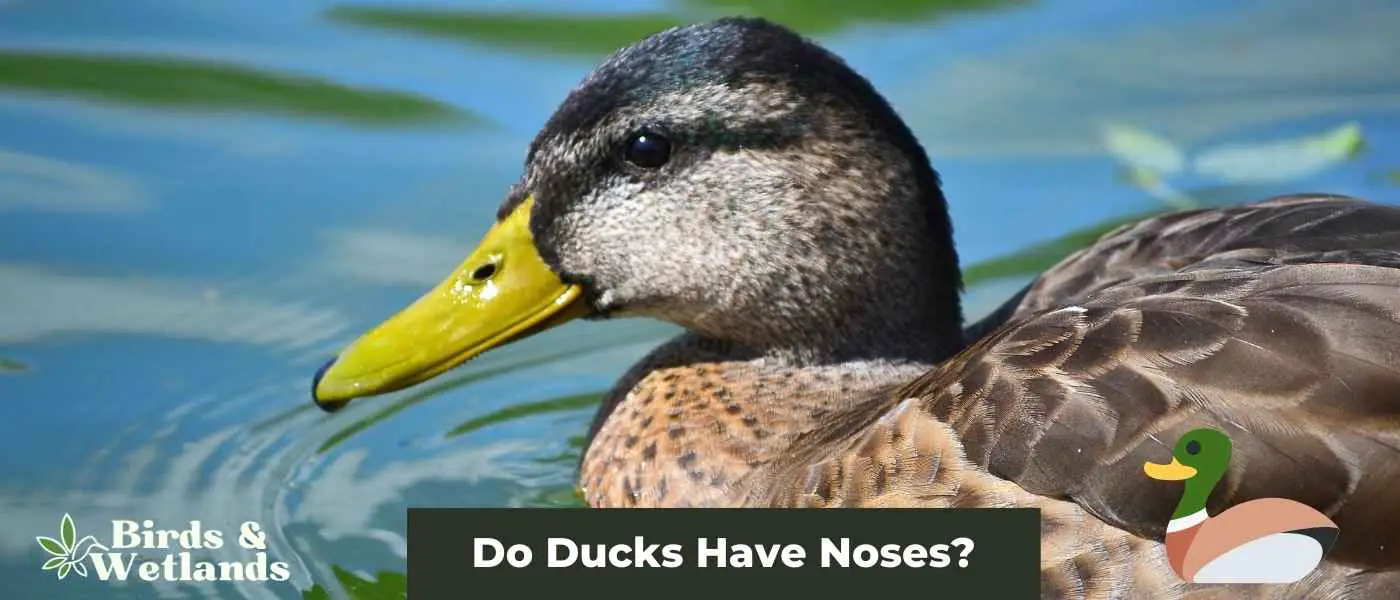Ducks are a common sight in many of our parks, ponds, and even backyards, but how much do we really know about these familiar feathered friends?
One commonly asked question revolves around their ability to smell – do ducks have noses?
Ducks don’t have noses in the way humans do, but they do have nostrils, also known as nares. These are located on their beaks, and they allow ducks to breathe. Ducks have an excellent sense of smell, which they use to locate food and sense danger. They are capable of closing their nostrils when they dive underwater to prevent water from entering.
Key Takeaways on Do Ducks Have Noses
- Ducks possess two nostrils on the top of their bills that stay moist, aiding their ability to smell underwater and identify food.
- A special valve in the nostrils prevents water entry when the duck dives, protecting the nasal passage.
- Ducks can hold their breath for about 8 to 10 minutes, during which their blood circulates back to the heart and enters body tissues, effectively creating a ‘gill-like’ system that allows them to breathe through their bills.
- The duck’s ‘nose’ is referred to as a bill, made up of bones called coronals and covered in hard keratin and small feathers.
- Ducks do have a septum, a divided wall in the nasal passage behind the nostrils and between the two nasal chambers.
- Ducks have an excellent sense of smell, being able to detect food from up to 4 miles away and recognize up to 20 different odors.
- Ducks display a significant capacity for learning and memory, as evidenced by their nesting habits and ability to track food sources over long distances during migration.
So, let’s embark on this quacking good journey to understand more about the intriguing olfactory world of ducks.
What Is a Duck’s Nose Called?

A duck’s nose is called a duck’s bill or beak, which comes in different shapes and sizes depending on the breed. Ducks’ beak is essential for water and land survival. It is made of keratin and bony projections that extend from the duck’s skull. The base of the bill is usually covered in small feathers.
What Are Parts of the Duck’s Nose?
The duck’s nose is located at the top of the ducks mouth or bill. The anatomical structure of the nasal cavity of ducks includes:
Nostrils (called nares)
Concha nasalis rostralis
Ductus nasolacrimalis opening
Concha nasalis media
Opening of nasolacrimal duct
Concha nasalis caudalis
Choanal cleft
| Topic | Details |
|---|---|
| Nostrils | Ducks have two nostrils on the top of their bills, which remain moist and help them smell underwater. |
| Bill | A duck’s nose is called a bill, made of bones covered in hard keratin and small feathers. |
| Septum | Ducks have a septum, a divided wall in the nasal passage behind the nostrils. |
| Sense of Smell | Ducks have a strong sense of smell, capable of detecting food from up to 4 miles away and up to 20 different odors. |
| Nesting Memory and Hunting | Ducks can remember nesting sites and exhibit remarkable hunting skills during migration. |
The Significance of the Septum
The septum, a divided wall in the nasal passage behind the nostrils and between the two nasal chambers, plays a significant role in a duck’s respiratory system. It helps separate airflow from each nostril, allowing for more efficient breathing and protection against potential contaminants that could harm the duck’s internal respiratory structures.
Do Ducks Have a Sense of Smell?
While ducks’ sense of smell is not as refined or sensitive as other animals, they can smell odors. Ducks smell through a specialized set of receptors located at the tip of their beaks, like how humans process smells through the nose. Waterfowl can detect the presence of food and even predators from great distances thanks to these receptors.
Ducks also rely on their sense of smell while hunting and flying, using odors to help them navigate more quickly and efficiently. Moreover, ducks such as mallards have been observed smelling in response to stimuli such as estrus volunteers in females or territory competition with other males.
Comparing Ducks’ Sense of Smell to Other Birds and Animals
While the myth that birds have a poor sense of smell has been debunked, the olfactory capabilities of birds vary greatly from species to species. Among birds, ducks are renowned for their keen sense of smell. Here’s how ducks compare to a few other birds and animals:
Pigeons: Pigeons have been known to use their sense of smell for homing, but their ability to detect odors is generally less developed than that of ducks. Ducks can smell food from up to 4 miles away, whereas pigeons’ olfactory range is significantly less.
Vultures: Some vultures, like the Turkey Vulture, have an excellent sense of smell, arguably better than ducks. They can detect the smell of decaying flesh from miles away, which helps them find their carrion meals.
Dogs: Dogs are famous for their sense of smell. They have about 300 million olfactory receptors in their noses, compared to about 6 million in humans, and the part of a dog’s brain that analyzes smells is 40 times greater than ours. Ducks do not match up to dogs in terms of olfactory capability, but their sense of smell is still impressive for avian standards, especially considering their ability to smell underwater.
Sharks: Sharks have an incredible sense of smell, able to detect blood in the water from miles away. While ducks’ underwater smelling abilities are quite impressive, they do not match the acute sensitivity of sharks.
Duck Olfactory Capabilities in Context
To put the olfactory capabilities of ducks into perspective, let’s compare them to human beings. While we humans rely heavily on our vision, ducks use a combination of sensory inputs, with a significant emphasis on their sense of smell.
While our olfactory system is confined to a small area within our nasal cavity, ducks have evolved to have a broad distribution of olfactory receptors throughout their beak. This allows them to pick up on a wide range of odors that humans might not even notice.
‘Odors’ That Ducks Can Detect
While research is still ongoing to fully understand the specifics of ducks’ olfactory senses, it’s known that ducks can detect a wide array of odors. Predominantly, these odors are related to food sources. Ducks can smell various types of vegetation, seeds, and aquatic organisms that make up their diet. This ability helps them locate food in diverse environments, both on land and underwater.
In terms of danger, ducks rely more on their keen eyesight and hearing to avoid predators. However, it’s plausible that they could detect the scent of a nearby predator, though this hasn’t been definitively proven.
Role of the Duck’s Sense of Smell in Migration and Nesting Habits
Ducks’ powerful sense of smell plays a crucial role in their migratory and nesting behaviors. During migration, the ability to smell food from miles away helps ducks find suitable stopover sites to rest and replenish their energy reserves. This capability is particularly important in unfamiliar environments, where visual cues may be less reliable.
When it comes to nesting, it’s believed that ducks use their sense of smell to recognize and return to previous nesting sites. This, combined with their memory of visual landmarks, allows ducks to weave elaborate nest patterns and return to the same locations year after year.
What Smells Do Ducks Love?

There is no particular smell that male and female ducks like, but they are can identify nearby food sources.
Understanding a duck’s sense of smell and how they use it can inform how we interact with these fascinating creatures. For instance, if you’re looking to attract ducks to your yard, try using food sources that have a strong odor. Conversely, the use of certain scents like vinegar, lemon, and peppermint can discourage them from visiting.
Understanding the importance of scent for ducks can help inform conservation efforts. By preserving the environments they rely on for food and shelter, we help to maintain their olfactory ‘map,’ crucial for survival.
What Smell Do Ducks Hate?
The sense of smell is probably the duck’s weakest trait but there are several different odors that tend to repel ducks and geese, including peppermint, lemon, and vinegar. Additionally, smoke, garlic, cayenne pepper, and chili peppers have all been shown to be quite unpleasant for female and male ducks. These smells work by overwhelming the olfactory system of the duck and causing it discomfort.
How Do Ducks Find Food in the Water?
The nostrils of ducks are located near the head end of the bill allowing them to easily eat food in the water such as fish without holding their breath. Their lamellae helps them skin invertebrates and crustaceans from the water’s surface. The lamellae are fine notches along the sides of a duck’s bill.
Can Ducks Breathe Underwater?

No, ducks can’t breathe underwater because they don’t have gills. Instead, they hold their breath for a certain amount of time before they rise to the surface.
FAQS on Duck Noses and Duck Sense of Smell
Can ducks smell humans?
While research is still ongoing, it’s plausible that ducks can detect the scent of humans, much like they can smell food sources and potential predators.
Do ducks use their sense of smell to communicate?
Ducks primarily use visual and auditory cues to communicate, but more research is needed to fully understand if and how they use scent in their communication.
Can ducks smell fear?
The concept of ‘smelling fear’ is not well-supported in the scientific community, even among mammals. It’s even less likely in birds like ducks. While they are highly attuned to their environment, it’s doubtful that they can detect complex emotional states like fear through scent.
How can I attract ducks to my garden?
Ducks are typically attracted to gardens with a water source and plentiful food. Planting native vegetation and providing a safe, sheltered area can also make your garden more appealing to ducks. Remember, however, that ducks can cause damage to some plants, and it’s important to ensure any human interaction is not disruptive to their natural behavior.
Why do ducks have a better sense of smell than other birds?
Ducks, like many waterfowl, rely on their sense of smell to find food underwater or buried in the mud. Over time, they have evolved a more developed olfactory system than many other birds to meet this need.


